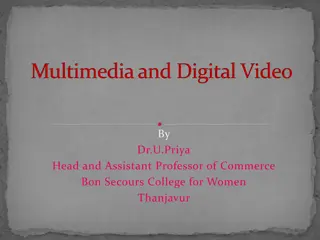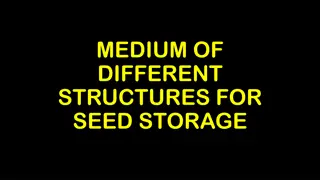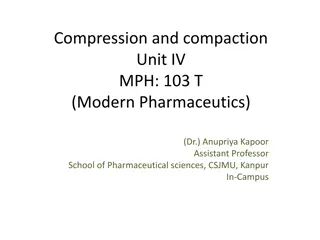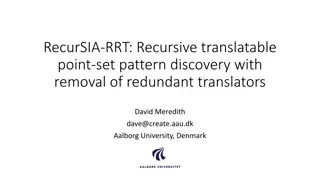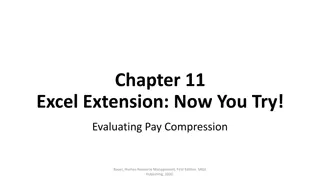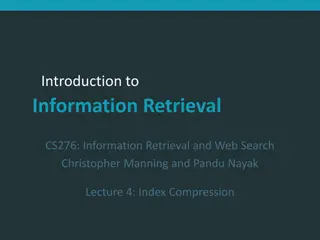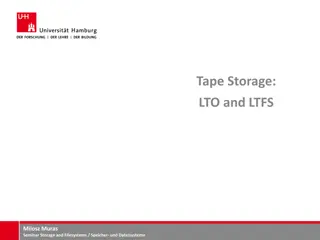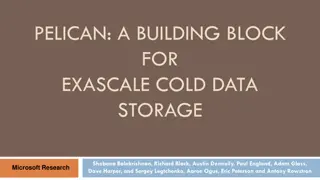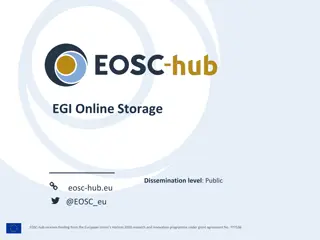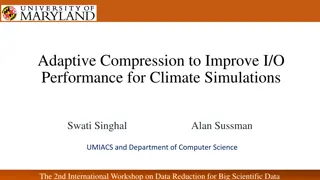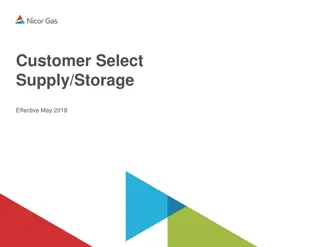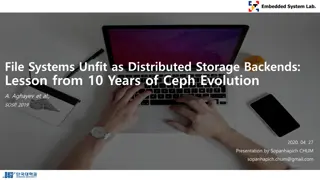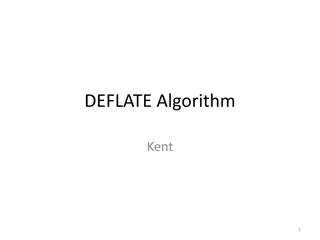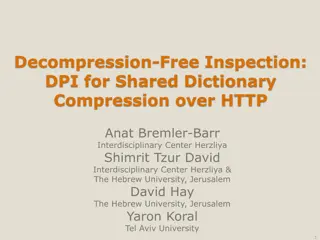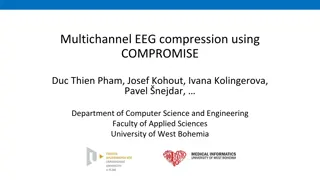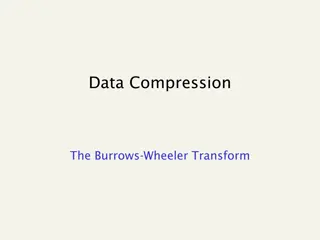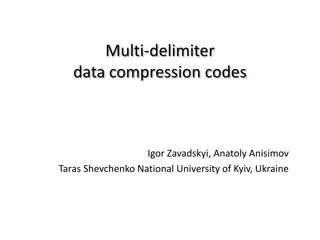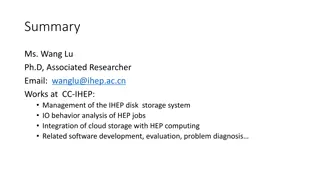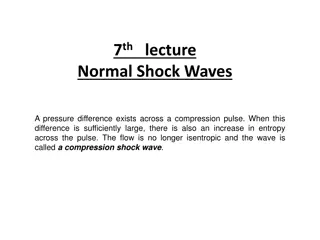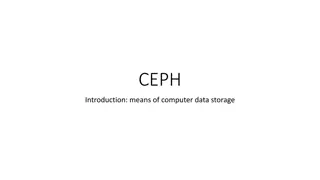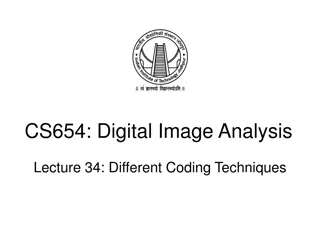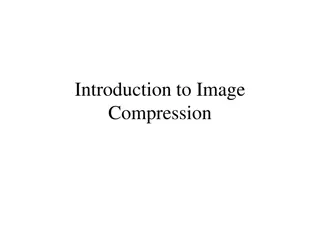Data Storage and Compression Techniques
Explore various concepts related to data storage and compression, including higher revision techniques, watch points for debugging, RAID disk mirroring, media compression methods, mantissa and exponent representation, and the impact of precision/range adjustments in numerical calculations. Learn about the effects of manipulating bits for mantissa and exponent on accuracy and range of numbers. Additionally, delve into storage calculations for audio files based on sampling frequency and bit depth.
Uploaded on Sep 18, 2024 | 1 Views
Download Presentation

Please find below an Image/Link to download the presentation.
The content on the website is provided AS IS for your information and personal use only. It may not be sold, licensed, or shared on other websites without obtaining consent from the author.If you encounter any issues during the download, it is possible that the publisher has removed the file from their server.
You are allowed to download the files provided on this website for personal or commercial use, subject to the condition that they are used lawfully. All files are the property of their respective owners.
The content on the website is provided AS IS for your information and personal use only. It may not be sold, licensed, or shared on other websites without obtaining consent from the author.
E N D
Presentation Transcript
Higher Revision TRAFFIC LIGHT REVISION TRAFFIC LIGHT REVISION USING MANDATORY USING MANDATORY CONTENT CONTENT
Watch Points You can use a watchpoint to stop execution whenever the value of an expression changes. Without having to predict a particular place where this may happen. (This is sometimes called a data breakpoint.) The expression may be as simple as the value of a single variable, or as complex as many variables combined by operators.
Mirroring (RAID) Disk mirroring is the replication of logical disk volumes onto separate physical hard disks in real time to ensure continuous availability. It is most commonly used in RAID 1.
Media Compression Perceptual Coding Lossy, elemen Free lossless audio codec Lossless, zipping WAV LZW encoding Lossless, DCT encoding - Interframe/intraframe
Mantissa/Exponent 3.14 Exponent Mantissa 1 0011 1010 314 -2 1111 1110 314 * 10-2 Mantissa & Exponent in reference to the number of bits used and the effect it has on the other.
Precision/Range Changing the number of bits to represent the mantissa and exponent has the following effects: Mantissa = Increasing the number of bits for the mantissa will increase the accuracy of the number but decrease the number of bits for the exponent and therefore decrease the range of numbers. Exponent = Increasing the number of bits for the exponent will increase the range of the numbers but decrease the number of bits for the mantissa and therefore decrease the accuracy of number. 1 1 1 1 1 1 1 1 1 1
Precision/Range Mantissa = 4 bits Max Number = 15 Exponent= 4 bits Max Number = 15 15 * 1015 = 15 000 000 000 000 000 1 1 1 1 1 1 1 1 Exponent= 4 bits Max Number = 31 Mantissa = 7 bits Max Number = 127 127 * 101 = 1270 1 1 1 1 1 1 1 1 1 * 10127 = 1 000 000 000 000 000 000 000 000 000 000 000 000 000 000 000 000 000 000 000 000 000 000 000 000 000 000 000 000 000 000 000 000 000 000 000 000 000 000 000 000 Exponent= 7 bits Max Number = 127 Mantissa = 1 bits Max Number = 1 1 1 1 1 1 1 1 1
Storage Calculations Audio File Size = (Sampling Frequency * Sampling Bit Depth) * Length * channels Video File Size = (Resolution * bit depth) * Frames per second * length
Offline Storage Benefits Always available as no internet connection needed. Eg. USB memory stick. While offline, data will be more secure as no external access can be made to modify or copy the data. Data is safe from virus infection.
Media storage DAT (Digital Audio Tape) & DLT (Digital Linear Tape) Linear storage used for archiving. Computer must read every file in order before retrieving the desired file. DLT generally stores more data. Optical (CD, DVD, Blu-Ray, R, RW, ROM) Random access, portable data, tracks made by laser, read by laser. Recordable, re-writable)
Transmission Media Wired Ethernet, fibre optic, coaxial, twisted pair. Very fast data transfer speeds. However limited to length of cable, must be built into walls, flooring and under roads (even across ocean floor). Wireless IR, bluetooth, wifi, 3G/4G. Radio signals of different strengths and therefore different distances. No need to dig up roads or drill through walls for cables. However lower speeds than wired.
Digital Certificates Certificate Authority Certificate Authority CA CA 2. Identification 2. Identification Information Information 2. Identification 2. Identification Information Information 3. Content including Signed certificate and Key Pair 1. Content Request 1. Content Request 4. Content including Signed certificate and Public Key Content User Content User (YOU) (YOU) Content Owner Content Owner (Amazon) (Amazon)

 undefined
undefined









